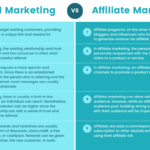Welcome to our blog post on monetizable video games! In today’s digital age, video games have become much more than just a source of entertainment. They have evolved into a lucrative industry that offers numerous opportunities for developers and publishers to generate revenue. In this article, we will delve into the world of monetizable video games, exploring popular strategies and techniques that can help maximize revenue and engage players.
Understanding Monetizable Video Games
Before we dive into the various monetization strategies, let’s first understand what monetizable video games are. Simply put, these are video games that are designed and developed with the intention of generating revenue. While some games may have an upfront cost, many developers rely on additional revenue streams to sustain their business.
Popular Monetization Strategies
There are several popular strategies that developers can employ to monetize their video games:
 What security measures are taken to protect my profits
What security measures are taken to protect my profits- Free-to-play (F2P) Model: This model offers the game for free, allowing players to download and play without any initial cost. Revenue is generated through in-game purchases, advertisements, or premium content.
- Pay-to-play Model: In this model, players have to purchase the game upfront to access and play it. Typically, there are no additional in-game purchases or advertisements.
- Subscription Model: In this model, players pay a recurring fee to access and play the game. This model is often used in massively multiplayer online games (MMOs) and online multiplayer games.
Maximizing Revenue through In-Game Purchases
In-game purchases have become a popular revenue stream for many video game developers. These purchases can include additional content, cosmetic items, power-ups, or in-game currency. To maximize revenue through in-game purchases, developers should:
- Offer a Variety of Items: Providing a wide range of items for players to purchase can cater to different player preferences and increase the likelihood of making a sale.
- Implement Limited-Time Offers and Discounts: Creating a sense of urgency through limited-time offers and discounts can incentivize players to make purchases.
- Ensure a Fair and Balanced Gameplay: It is essential to strike a balance between in-game purchases and maintaining a fair and enjoyable gameplay experience for all players.
Effective Advertising Techniques
Advertisements can be another significant source of revenue for video game developers. However, it is crucial to strike a balance between ads and user experience to avoid alienating players. Some effective advertising techniques include:
- Native Advertising: Integrating ads seamlessly into the game environment can make them less intrusive and more engaging for players.
- Rewarded Ads: Offering players rewards, such as in-game currency or extra lives, in exchange for watching ads can encourage participation and make the ad experience more enjoyable.
- Targeted Advertising: Using player data and demographics to deliver targeted ads can improve relevancy and increase the chances of converting players into customers.
Engaging and Retaining Players
Engaging and retaining players is crucial for the long-term success and revenue generation of a video game. Some effective methods to achieve this include:
Hey! This content may interest you Is there some type of affiliate or referral program
Is there some type of affiliate or referral program- Regular Content Updates: Providing regular updates, such as new levels, characters, or challenges, can keep players interested and coming back for more.
- Community Building: Creating a strong community around the game, through forums, social media, or in-game events, can foster player engagement and encourage long-term loyalty.
- Offering Challenges and Achievements: Implementing challenges and achievements within the game can provide players with goals to strive for and a sense of accomplishment.
Conclusion
In conclusion, monetizable video games offer a wealth of opportunities for developers and publishers to generate revenue. By understanding the various monetization strategies and employing effective techniques, developers can maximize their revenue potential while providing an engaging and enjoyable experience for players. Remember to strike a balance between monetization and user experience to ensure long-term success in this ever-evolving industry.
Frequent Questions
1. How can I determine the best monetization strategy for my video game?
Choosing the best monetization strategy for your video game depends on factors such as the target audience, game genre, and gameplay mechanics. Conduct market research, analyze similar successful games, and consider player preferences to make an informed decision.
2. What are some examples of successful in-game purchase models?
Some successful in-game purchase models include offering cosmetic items, additional levels or content, virtual currencies, or power-ups. It is essential to strike a balance between providing value to players and maintaining a fair gameplay experience.
Hey! This content may interest you There is a fee or commission for using the service
There is a fee or commission for using the service3. How can I strike a balance between ads and user experience?
To strike a balance between ads and user experience, consider implementing non-intrusive ad formats, such as native ads or rewarded ads. Test different ad placements and frequencies to ensure they do not disrupt the gameplay flow and provide value to players.
4. What are some effective methods to keep players engaged and coming back?
Regular content updates, community building, and offering challenges or achievements are some effective methods to keep players engaged and coming back. Listen to player feedback, address their concerns, and provide a continuous stream of fresh and exciting content to maintain player interest.
